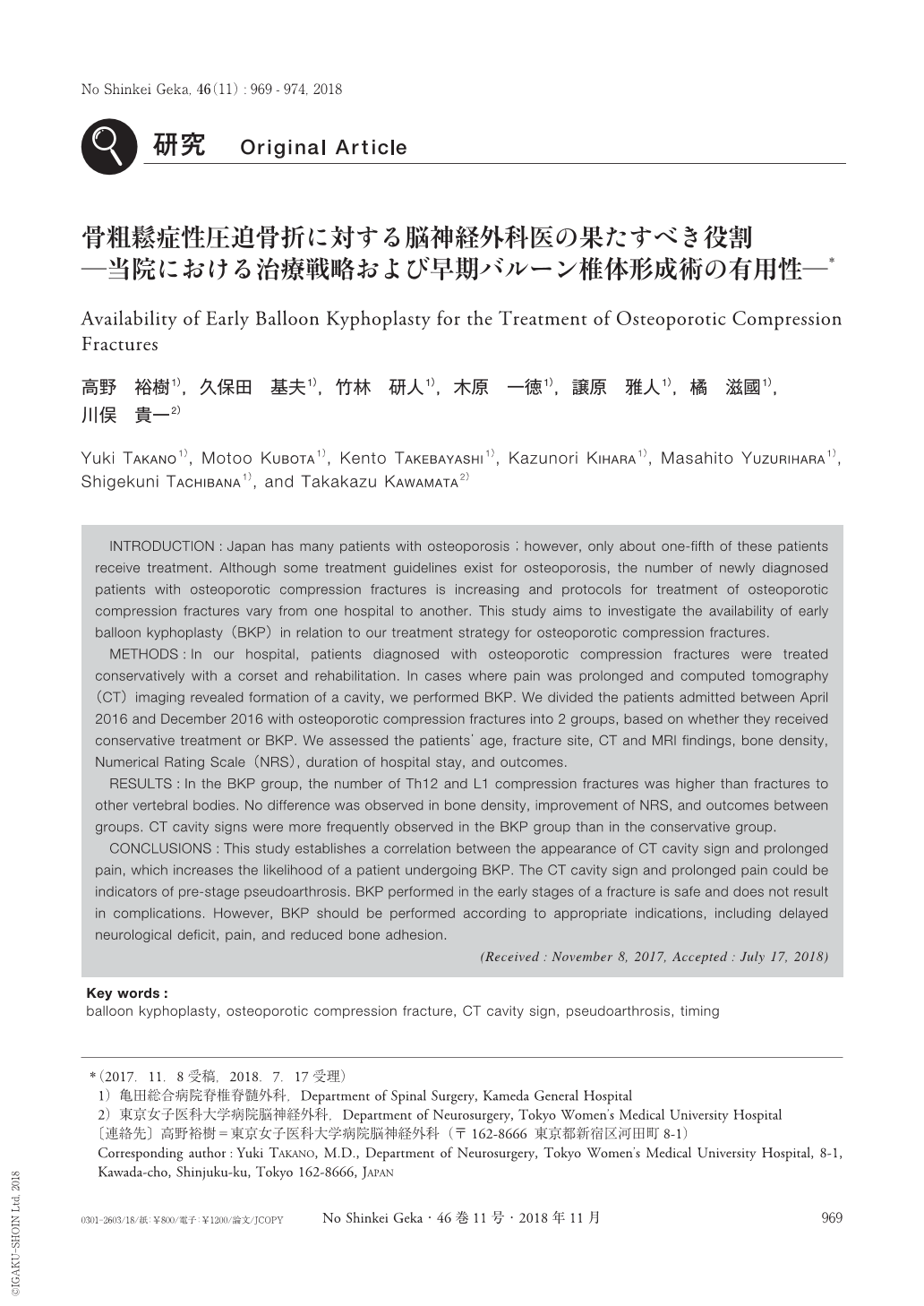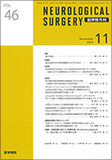Japanese
English
- 有料閲覧
- Abstract 文献概要
- 1ページ目 Look Inside
- 参考文献 Reference
Ⅰ.はじめに
現在,日本の骨粗鬆症患者は1,280万人程度とされており,50代以上の女性に関しては3人に1人が骨粗鬆症と言われているが,医療機関にて治療を受けているのは5分の1にも満たない1,9,10).また骨粗鬆症が原因で新規圧迫骨折を起こす人は年間97万人程度いると言われており,圧迫骨折後に全身状態の悪化によりQOLの低下や将来的な死亡率が高まることが報告されている6-8).このように,骨粗鬆症および圧迫骨折は,医療費,介護費の面からも対処すべき課題であり,見過ごすことができない疾患である.
治療方針は施設間での差が大きく,骨粗鬆症に関してはガイドラインや指標が提唱されているが,圧迫骨折に関しては外固定の必要性,治療期間,外科的治療介入のタイミングなどはっきりとした指標がないのが現状である.外科的治療の1つであるバルーン椎体形成術(balloon kyphoplasty:BKP)は2011年に保険適用となり,日本国内でも広まりつつある.低侵襲かつ疼痛コントロールに優れ,バルーン拡張による脊椎アライメントの改善も期待できる治療法である.しかし治療の明確なタイミングについては定められていない.一般的には,外科的治療の適応を判断する前に,6〜8週間の十分な保存的加療を行っていることが多いが,高齢者においては疼痛による臥床期間の延長によりADLが低下することが懸念される.今回われわれは,亀田総合病院(以下,当院)における圧迫骨折の治療戦略および早期BKPの有用性について検討を行った.
INTRODUCTION:Japan has many patients with osteoporosis;however, only about one-fifth of these patients receive treatment. Although some treatment guidelines exist for osteoporosis, the number of newly diagnosed patients with osteoporotic compression fractures is increasing and protocols for treatment of osteoporotic compression fractures vary from one hospital to another. This study aims to investigate the availability of early balloon kyphoplasty(BKP)in relation to our treatment strategy for osteoporotic compression fractures.
METHODS:In our hospital, patients diagnosed with osteoporotic compression fractures were treated conservatively with a corset and rehabilitation. In cases where pain was prolonged and computed tomography(CT)imaging revealed formation of a cavity, we performed BKP. We divided the patients admitted between April 2016 and December 2016 with osteoporotic compression fractures into 2 groups, based on whether they received conservative treatment or BKP. We assessed the patients' age, fracture site, CT and MRI findings, bone density, Numerical Rating Scale(NRS), duration of hospital stay, and outcomes.
RESULTS:In the BKP group, the number of Th12 and L1 compression fractures was higher than fractures to other vertebral bodies. No difference was observed in bone density, improvement of NRS, and outcomes between groups. CT cavity signs were more frequently observed in the BKP group than in the conservative group.
CONCLUSIONS:This study establishes a correlation between the appearance of CT cavity sign and prolonged pain, which increases the likelihood of a patient undergoing BKP. The CT cavity sign and prolonged pain could be indicators of pre-stage pseudoarthrosis. BKP performed in the early stages of a fracture is safe and does not result in complications. However, BKP should be performed according to appropriate indications, including delayed neurological deficit, pain, and reduced bone adhesion.

Copyright © 2018, Igaku-Shoin Ltd. All rights reserved.


